#bagworm moths
Text

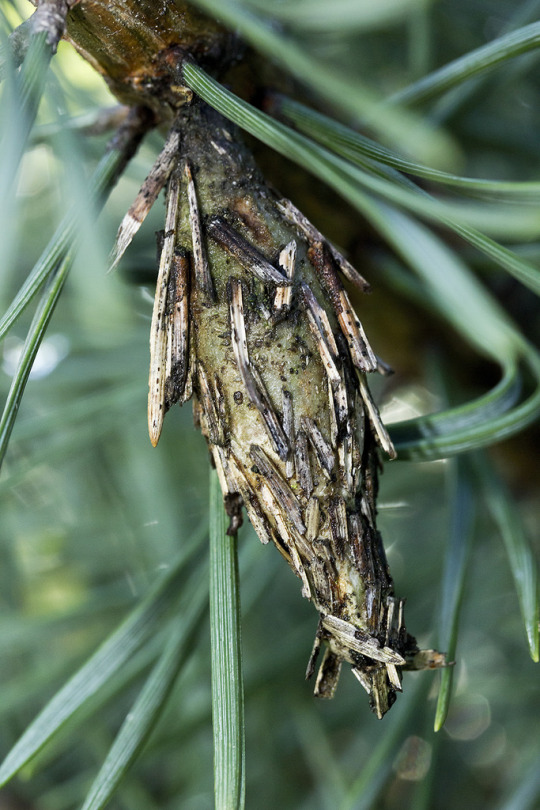
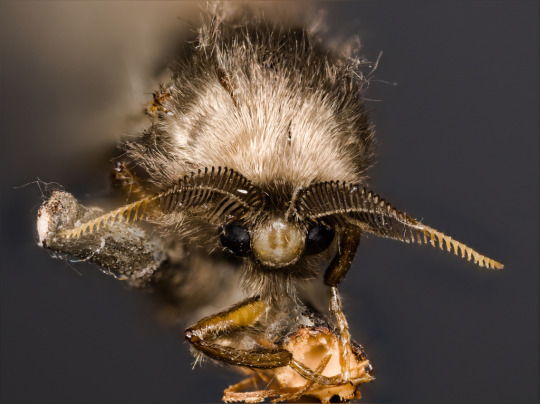
The Evergreen Bagworm Moth: The Ultimate Stay-At-Home Mom
The evergreen bagworm moth or common basket worm (Thyridopteryx ephemeraeformis) has one of the more unusual life cycles of the order Lepidoptera. They begin their lives as part of a clutch of 500-1,000 eggs, laid in September or October, and hatch the following April. While they're still caterpillars, both males and females begin constructing large, elaborately decorated cocoons from silk and fecal matter, as well as bits of leaves and bark from their host plant. This case is built around their bodies as they feed, growing up to 6 cm (2.3 in) in length, and is eventually attached to directly to the host plant. The caterpillar molts through seven instars without ever leaving this case, and when it's large enough the larva seals itself inside and pupates for about 4 weeks.
Fully mature adults emerge from their cocoons in mid-August. While males finally leave behind their protective cases entirely. However, females remain firmly entrenched in their cocoons, and emit pheromones to attract a mate. Once a male arrives, he inserts his abdomen into the cocoon's entrance to inseminate the female. After laying her eggs, the female dies, never having left the protective case that she built for herself. Once her eggs hatch, they disperse along the same host plant or "balloon" on strands of silk to find a new home. Individuals only live a single year.
Adult evergreen bagworm moths are fairly plain, though males and females are easily distinguished. Males are covered with dark brown or black fur, with comb-like antennae typical of moths. Unusually, though, male T. ephereraeformis have transparent wings; these can reach a wingspan of 2.5 cm (0.9 in). Female adult basket worms largely resemble the larvae of the species. They lack wings, as well as eyes, antennae, or a mouth. Her body is about 1.9-2.3 cm (0.74-0.9 in) long, yellowish, and extremely soft and unprotected-- hence the need for a strong cocoon.
While neither sex feeds as adults, caterpillar common basket moths are voracious eaters. Their primary food are evergreens, especially junipers, arborvitae, and red cedar, but they can also be found on a variety of other trees including oaks, willows, maple and elm. The most common predators of the evergreen bagworm moth are wasps and hornets, which are able to more easily infiltrate their protective casings, but both adults and caterpillars may also fall prey to woodpeckers, mice, and sparrows.
This particular species of bagworm moth is common throughout eastern North America, particularly in areas with mixed or evergreen forests. The common basket worm can also thrive in urban environments, as there tend to be fewer predators to control their populations.
Conservation status: The evergreen bagworm moth has not been evaluated by the IUCN. Due to its large and widespread population, the species is likely stable; in many areas it is considered a pest due to the rapid rate at which a population can decimate the local vegetation.
If you like what I do, consider leaving a tip or buying me a kofi!
Photos
Dave Webb
Ben Gruver via iNaturalist
Barbara Speckart
#evergreen bagworm moth#common basket moth#Lepidoptera#Psychidae#bagworm moths#moths#lepidopterids#insects#arthropods#evergreen forest arthropods#mixed forest arthropods#urban arthropods#north america#eastern north america#animal facts#biology#zoology
69 notes
·
View notes
Photo
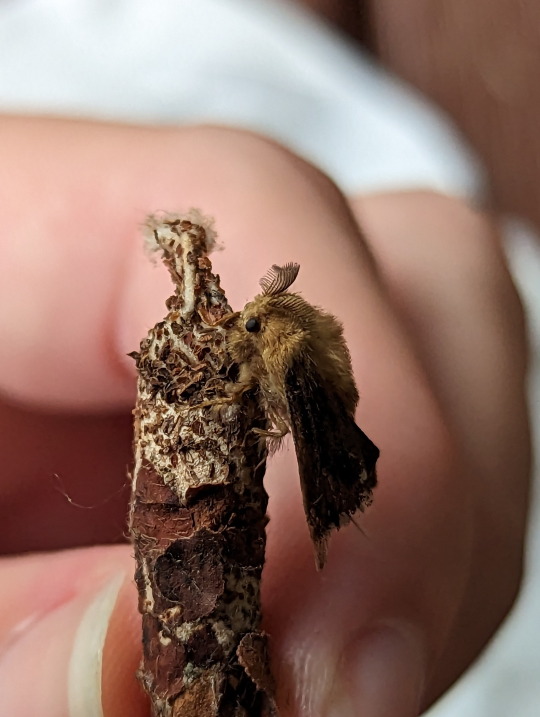
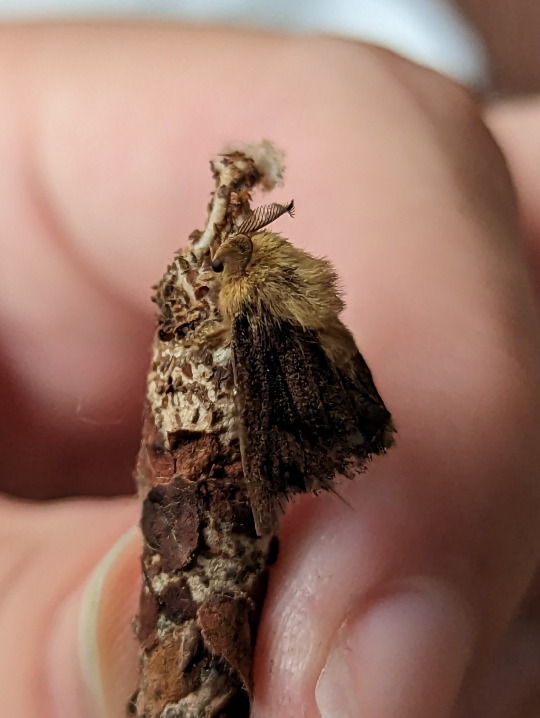

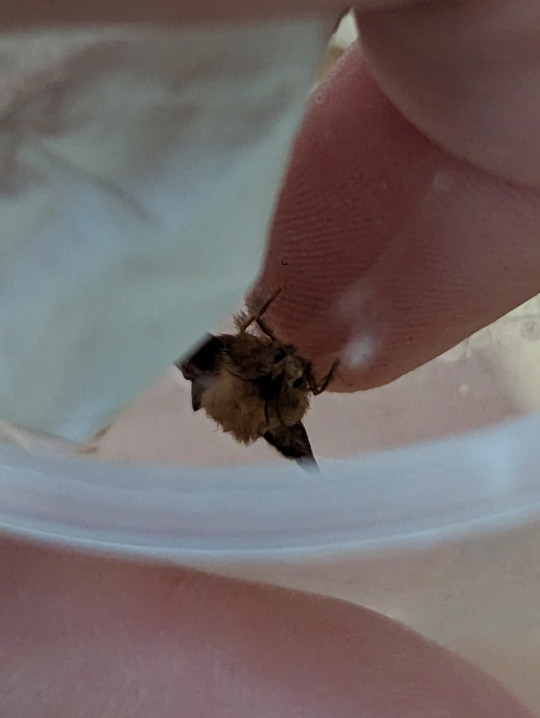


I successfully raised a bagworm!
Lately I’ve had good luck with cocoon rearing. I’m certainly going to continue doing so going forward!.
This specimen may belong to the Amatissa genus. There doesn’t appear to be much information about Australian bagworm species, less so about the Amatissa genus. The lack of information is a further incentive for me to collect more cocoons.
Another example of a hatched specimen can be seen here.
Unidentified, Genus Amatissa
Foodplant: Rhododendron
??/08-9/22 - 22/12/22
(Caterpillar was found on our wheelie bin at a young age, didn’t record its form)
#bagworm#bagworm moths#hand-raised#case moths#moths#mothblr#moth#mothcore#moths tw#entomology#lepidoptera#Lepidopterology#cocoons & cases#Amatissa#Unidentified#Psychidae#Tineoidea#case bearers
34 notes
·
View notes
Text
Bagworm Moth Caterpillar Appreciation Post 🐛 🪵

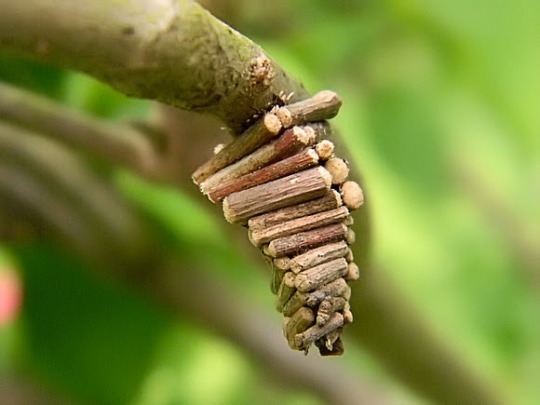


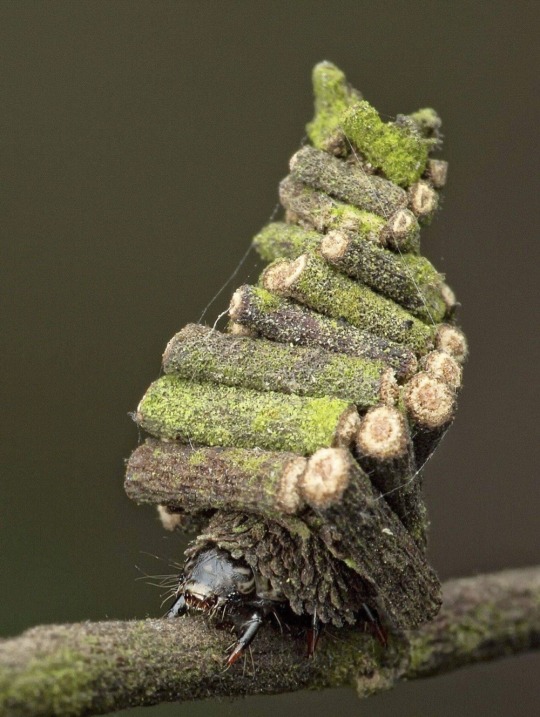



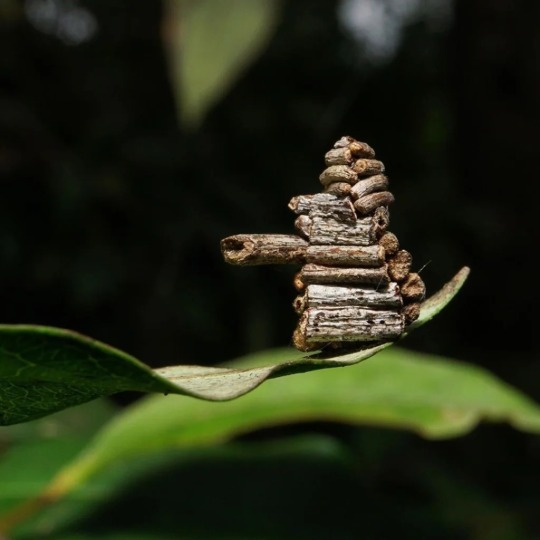

The bagworm moth caterpillar collects and saws sticks to create tiny intricate log cabins to live in
#bugs#insects#bug#caterpillar#bagworm#log cabin#tw bugs#cw bugs#insect#insect tw#cw insects#insect cw#entemology#moth#intricate rituals#trees
2K notes
·
View notes
Text

#bagworm moth caterpillar#moss#forest#nature#cottage#cabin#cottagecore#forestcore#gardencore#caterpillar
1K notes
·
View notes
Note
I was inspired by the dolphin post to spread my anti-jellyfish agenda.
Y’know what the most confusing animal species is? JELLYFISH. They have no brains, no lungs, really no blood either and yet somehow they’re still alive?? Wtf. Not even sponges make this little sense. I want to pick their brains apart BUT THEY DON’T HAVE ANY. I don’t even know how they hold themselves together there’s nothing to mold its cells around because THEY ALSO DON’T HAVE BONES how do they do it
I am continuously confused by these creatures that should not be alive and yet have survived for millions of years
String identified:
a t t t a at- aga.
’ at t t cg aa c ? . T a a, g, a t a t t’ t a?? t. t g a t tt . at t c t a aat T T ’T A A. ’t t t tgt t’ tg t t c a ca T A ’T A t t
a ct c t cat tat t a a t a a
Closest match: Luffia ferchaultella genome assembly, chromosome: 5
Common name: Virgin smoke
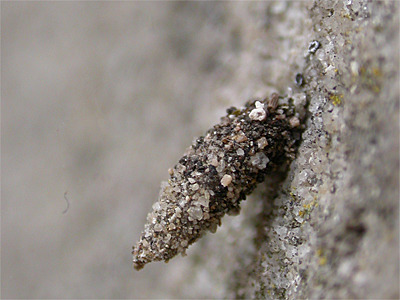
#tumblr genetics#asks#genetics#requests#sent to me#bugs#insects#bagworms#moths#virgin smoke#so cool it looks like concrete....
419 notes
·
View notes
Note
hello! would you be able to help me identify this... thing? my mom is convinced this is the egg sac of some sort of bug but neither of us have any idea what kind it may be. is this even a bug thing? if so, what kind? thanks ♡

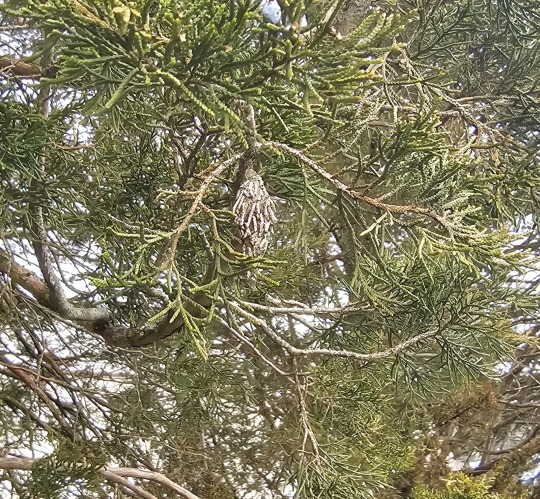
posting this one on my main since I need a reminder to get through all of the bug submissions on @crawlingkind + also I have some specimens to share!
that is a structure made by Thyridopteryx ephemeraeformis, a species of bagworm moth. I’m not sure if it’s occupied since empty bags can stick around for years but it could contain either a larva, a pupa, or an adult female. the caterpillars can eat a wide range of plants, and incorporate items from their environment into a sturdy, weatherproof silken bag, which they drag behind them wherever they go. once they are ready, they tie the bag to a perch and pupate. only the male emerges as a recognizeable moth, and flutters around in search of females.

a male and a small case, probably from another male.
the adult female is often described as remaining larviform, but she is even more wormlike than the caterpillars: she is a featureless tube of fat and egg-laying machinery, lacking functional eyes or antennae, and with no legs or wings to speak of. she will die in the bag, surrounded by her eggs, who will hatch the following season.


317 notes
·
View notes
Text
Found this dead bunch of grass crawling across my driveway today. I identified it as a Saunders case moth, or bag moth or bagworm. After a couple of photos I moved it into some vegetation.
I learnt something new! This was a male. The females are a different colour, and they don't grow wings even after they pupate, and they never leave the case.
Thanks to @onenicebugperday for inspiring me.

261 notes
·
View notes
Text
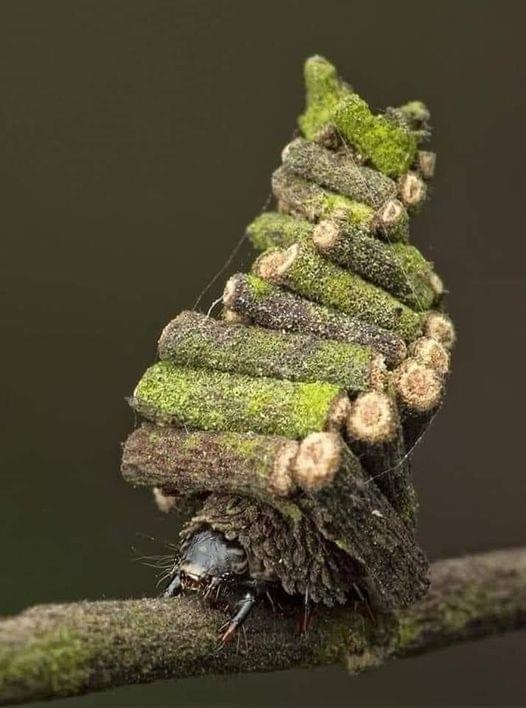
Bagworm moth caterpillar collects and cuts tiny sticks to build a tiny log cabin to live in! '
This young engineer is an example of the greatness of the natural world and some crazy-ass creator!
#moth#design#vieformidable#architecture#interior design#art#photography#bugs#catepillar#interiordesign#nature#natural world#intelligent design#cabin#cozy cabin#bagworm#bagworm moth#engineering
131 notes
·
View notes
Text
@extracrunchyboybutter submitted: (no ID needed) i think you would appreciate this eastern bagworm i found today :D
I have never loved a child more than I love this child, thank you
#bugs#submission#insects#video#caterpillar#larva#bagworm#evergreen bagworm moth#just scootin along!!#10/10
825 notes
·
View notes
Text

to the tune of “you are my sunshine”
12 notes
·
View notes
Text

evergreen bagworm moth !! (Thyridopteryx ephemeraeformis)
bagworm bagworm bagworm bagworm
#bagworm#conservation#nature#biology#wildlife#wildlife photography#insects#entomology#moths#lepidoptera
9 notes
·
View notes
Note
sorry for the out-of-the-blue message LOL but i am SO glad calling legato a bagworm caught on with at least one person and when i see you calling him a bagworm in your bookclub posts i laugh
No worries! I don't mind out-of-the-blue messages or DMs or anything. (I also don't feel any particular obligation to respond to them, though... and sometimes I just flat-out forget about them. Like when you check a text message from someone and go, "I'll respond later," but then it's a month later and you still haven't responded.)
Legato is... he's... he's just so bagworm.

#pretty sure bagworm moths don't drink tears but it's the thought that counts#incorrect trigun quotes#legato bluesummers#trigun maximum#manga coloring#pancake ask#sometimes i color stuff#sometimes i abuse photoshop
21 notes
·
View notes
Photo



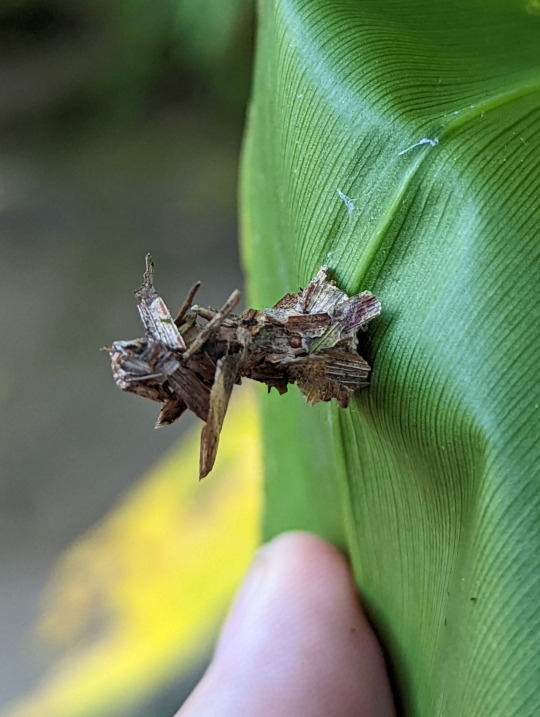
Two Bagworm specimens found in the same rainforest.
Each with leafy cocoons, but one is pyramid shaped.
Psychidae
18/05/22
#Bagworms#bagworm moths#caterpillar#caterpillars#larvae#larva#larval stage#cocoon#lepidoptera#Lepidopterology#Lepidopterophobia#Unidentified#bugblr#bugs tw#bugs#bug#insects#insecta#insect#insectblr#insects tw#entomology#Arthropoda#Arthropods#nature#nature photography
6 notes
·
View notes
Text
Round 1 Match 57
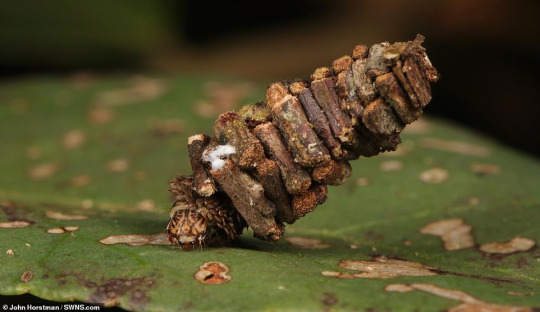
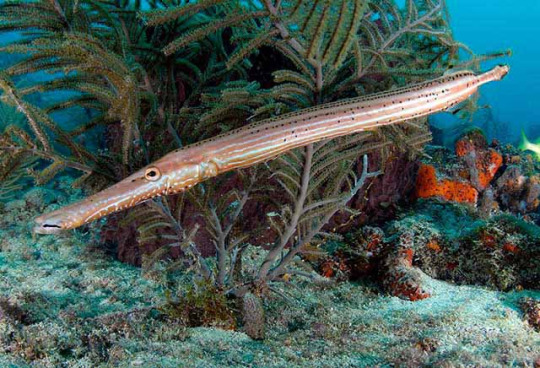
Bagworm Moth Caterpillar: "Lil' guys building themselves houses out of twigs because of how shy and ugly they are. other caterpillars don't have to hide themselves because at least they are cute and fat, but bagworm caterpillars? nah, they look like tiny dried out turds. they need their twig castles because they are like the paper bag we want them to keep over their heads. /affectionate"
Trumpetfish: "Basically a pipefish, which are already weird enough, but a meter long and predatory."
38 notes
·
View notes
Text

The Queen of Shells is seen as intuitive, compassionate, and nurturing. She rules the realm of emotions. The calmness of the woods and the sky symbolizes the serene mind of the queen. This card embodies the mastery of emotional balance, reflecting a valuable insight into the complex terrain of the human psyche. Above all, this queen acts as a mirror, illuminating the depths present in others so they see themselves in a fresh, new light. She often embodies your trusted inner voice. Her message often suggests prioritizing your emotional well-being before assisting others. Cultivating self-love fosters compassion in turn.
Bagworms are fascinating animals renowned for their unique protective bags, meticulously woven from silk and camouflaged with materials plucked from their environment. The intricate construction of these sanctuaries serves as a powerful metaphor for the importance of trusting our instincts and crafting safe spaces for our emotional growth. This card inspires us to delve deep within ourselves, to trust our instincts and emotions, while simultaneously maintaining a shield of emotional resilience. It underscores the significance of actively listening to the subtle, often unspoken, wisdom residing within our subconscious mind, much like the way bagworms rely on their instincts to create a shelter that aligns with their needs. This behavior eloquently echoes the Queen's intuitive wisdom and adaptability in navigating the tempestuous currents of emotions. Vulnerability can indeed coexist with strength, and our emotions are a source of great power.
In essence, the Queen of Shells guides us toward greater empathy and a deeper understanding of ourselves and those around us. The bagworm symbolizes the importance of honoring our instincts and the reliable inner guidance residing within us. These elements converge to inspire us on a journey of emotional maturity, kindness, and unwavering trust in our inner selves, enabling us to navigate the complex realm of feelings with grace and resilience.
Prints are available on Redbubble and Inprnt
| Instagram |
#artists on tumblr#illustration#tara jillian art#nature#insects#bugs#redbubbleartist#bug tarot#tarot cards#tarot art#invertebrate#invertblr#big bug gospel#bagworm#moths#bugblr#insect art#minor arcana
9 notes
·
View notes
